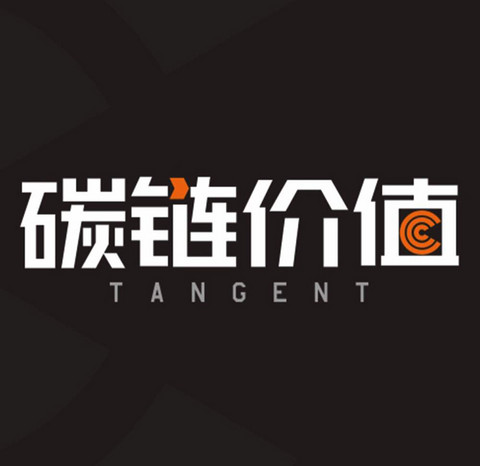Editors Note: This article comes fromCarbon chain value (ID: cc-value)Editors Note: This article comes from
Carbon chain value (ID: cc-value)
Carbon chain value (ID: cc-value)
, Original author: Christine Kim William Foxley, reprinted with authorization by Odaily.
Ethereum 2.0 is likely to implement its first hard fork in 2021.
According to a January 14, 2021 Ethereum developer call, a research team supported by the Ethereum Foundation is currently developing a work plan for a backward-compatible beacon chain, which is expected to be implemented by mid-2021. Teku client project manager Ben Edgington pointed out that the fork discussed in this Ethereum 2.0 conference call is not a hard fork in the traditional sense, but more like a warm-up before sharding, and ETH 1. Merger of x and the beacon chain.
On January 15th, Ben Edgington published an article on his blog, which stated that in a sense, the term fork is somewhat overused in the blockchain industry. In fact, with multiple competing chains on the network ending, the upgrade should not even be forked after the upgrade is complete.
It is reported that this upgrade may include the following code changes, although these changes have not yet been fully agreed:
1. An infrastructure to support light clients via a synchronization committee. Light clients can validate the Ethereum blockchain without the heavy load of a typical validator device.
2. Add a new function called balance_denominator, which can change the penalty points for verifiers who do not participate in the network. Ethereum 2.0 researcher Danny Ryan wrote on GitHub that the current penalty method is a denial of service (DOS) vector, while the new functional function improves blockchain efficiency.
3. The reward will be calculated on an epoch (epoch, similar to a block), instead of being calculated according to the current operation after the epoch is closed. Ben Edgington pointed out that this update should help limit the number of false proofs.
Ice Age on Eth 2.0?
Another feature being considered for the ethereum “hard fork” is the difficulty bomb — also known as the “ice age.” Difficulty bombs typically operate at a preset block height, originally a mining adjustment mechanism added to the ETH 1.x blockchain in 2015. The difficulty bomb will make mining harder and harder over time to keep developers motivated to work on Ethereum 2.0.
So far, Ice Age has been delayed three times on the proof-of-work (PoW) Ethereum blockchain, undergoing hard forks in Byzantium (2017), Constantinople (2019) and Muir Glacier (2020) .
The difficulty bomb is central to Ethereum because it drives the economic incentive for developers to continue innovating on the underlying blockchain. However, Ethereum 2.0 researcher Danny Ryan stated in the Mapping Out Eth 2.0 podcast that since there are already economic forces driving the beacon chain, it is unlikely that an ice age will be included in Ethereum 2.0, saying:
“There is no Ice Age on the Beacon Chain, but it actually has a coercive function, as there are currently 2.5 million ETH locked in the system, and at this order of magnitude, developers in the community cannot allow Ice Age to run in parallel, nor can Do more.
Danny Ryan further pointed out that deciding whether to incorporate difficulty adjustment features (such as Ice Age) into ETH 2.0 actually depends on how you view the development of the Ethereum blockchain after ETH 2.0 is completed. Some want ethereum to innovate further, while others believe that ethereum should follow a path similar to the bitcoin blockchain, albeit a bit rigid.
Danny Ryan continued: Some people want to continue to upgrade and iterate, and introduce the latest encryption technology into the Ethereum Layer 1 network. But Im sure that the debate over whether Ethereum 2.0 should include Ice Age will continue, and some people hold Hold the idea of continuing to escalate, but some people are a bit rigid.
The Ethereum 2.0 network has continued to grow steadily, with near-perfect user engagement.here。)
On Saturday, January 23, 2021, the Ethereum 2.0 daily average network participation rate reached an all-time high of 99.46%. This shows that despite the increasing number of participants, Ethereum 2.0s validator program is still heavily committed to securing the network, and validators can also be rewarded.
Here we briefly introduce the background: the economic operation of Ethereum 2.0 is mainly based on the sliding scale of rewards, and the relevant rewards will be dynamically adjusted based on the total number of active validators. The higher the number of validators staked on Ethereum 2.0, the lower the total amount of rewards issued on the network. (If you want to learn more about the monetary policy of Ethereum 2.0, you can click
here
On Thursday, January 21, 2021, the average daily reward per validator on Ethereum fell to a seven-week low of 0.007235 ETH. However, the value of rewards earned on the network has instead increased by 81.47% during the same time period due to the ever-increasing price of ETH tokens in the crypto market. In other words, validators are earning more USD rewards per day on average due to rising ETH prices.
Ethereum 2.0 user deposit details










